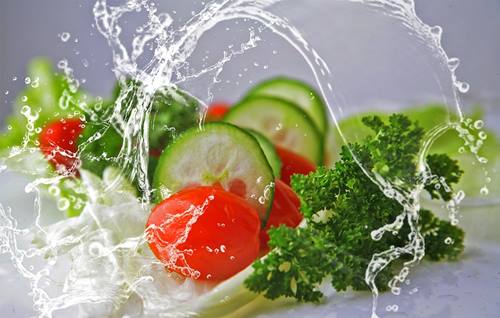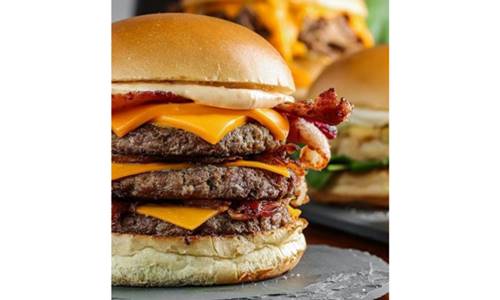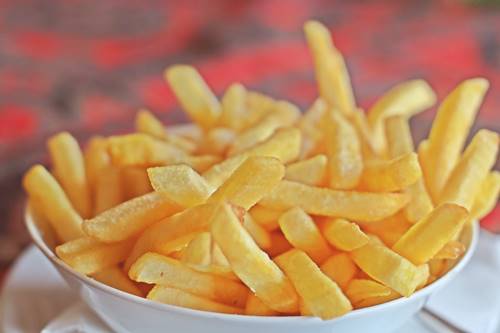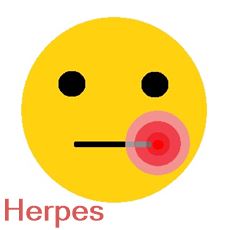What are ultra-processed foods
All About Processed and Unprocessed Foods
Fact Checked
×All the content published in our website is fact checked to validate its accuracy.
Visit our guidelines web page to learn more about our strict processes regarding how we review our content's sources: reliable and reputable journals, media websites, universities, colleges, organizations, and professionals.
Our articles are based on scientific evidence, and the references are included in its footnotes, which are clickable links to sound scientific papers.
First published: 02.Dec.2023
Overview: Food Processing and our health
Ancient humans processed foods to be able to eat them, like the invention of fire and cooking, and to keep them from spoiling, like drying, smoking, salting.
Industrial processing moved beyond cooking, steaming and salting, it takes the food apart and reassembles it adding chemicals and multiple ingredients that add sugar, fats, salt and calories to it.
The average Americans get almost 60% of their daily calories from ultra-processed foods while unprocessed or minimally processed foods make less than 30% of their energy intake.
This article explains what unprocessed, processed and ultra-processed foods are, the pros and cons of ultra-processed foods, meal tips on how to processed foods in your daily diet and concerns about their health risks (they are associated with weight gain, high blood pressure, risk of diabetes, stroke and heart disease).
In this Article (Index)
- What foods are considered ultra-processed?
- Americans Eat Too Much Ultra-Processed Foods
- Different types of food: Unprocessed to Ultra-Processed
- Unprocessed Foods
- Processed culinary ingredients
- Processed Foods
- Ultra-processed foods
- Example of Processed and Unprocessed Foods
- How to avoid highly processed foods?
- Minimally Processed Meal Plan
- Are Processed Foods Unhealthy?
- Pros of processed foods
- Cons of processed foods

Ultra-processed foods
What foods are considered ultra-processed?
Any food that has been altered during its preparation is known as a "processed food."
Processing involves things like cooking, drying,peeling, grinding, smoking, frying, freezing, canning and also the addition of other ingredients to a natural food.
These other ingredients can include some simple products like oils, fats, salt, sugars, and starches, or more complex additives to enhance color, flavor, palatability and texture.
Processed foods are mostly tasty, low priced, ready-to-eat products.
Not all processed foods are unhealthy, some require processing to become safe (like pasteurized milk or beer, the heating process kills harmful microbes), but in general, the more processed they are, the more unhealthy they become. With ultra-processed foods being the most dangerous.
Added fiber and vitamin enriched foods, low-fat and low-sugar yogurts are also key elements in a healthy diet.
Added sugar, salt and fats make some processed foods unhealthy, by providing unnecessary calories, exceeding the dietary salt recommendations or refined carbohydrates and sugars.
The U.S. Department of Agriculture (USDA) defines a processed food as follows:
The term "processed food" means any food other than a raw agricultural commodity and includes any raw agricultural commodity that has been subject to processing, such as canning, cooking, freezing, dehydration, or milling Federal Food, Drug, and Cosmetic Act (1)
The definition is expanded in the Food and Drugs Act adding: "preparing, treating, modifying or manipulating food, including food crops or ingredients. Examples of manufacturing/processing activities include: Baking, boiling, bottling, canning, cooking, cooling, cutting, distilling, drying/dehydrating raw agricultural commodities to create a distinct commodity (such as drying/dehydrating grapes to produce raisins), evaporating, eviscerating, extracting juice, formulating, freezing, grinding, homogenizing, irradiating, labeling, milling, mixing, packaging (including modified atmosphere packaging), pasteurizing, peeling, rendering, treating to manipulate ripening, trimming, washing, or waxing. For farms and farm mixed-type facilities, manufacturing/processing does not include activities that are part of harvesting, packing, or holding." (2).
Americans Eat Too Much Ultra-Processed Foods
A study published in 2016 (3) reported that "nearly three in five calories (57.9%) came from ultra-processed foods... The most common ultra-processed foods in terms of energy contribution were breads; soft drinks, fruit drinks and milk-based drinks; cakes, cookies and pies; salty snacks; frozen and shelf-stable plates; pizza and breakfast cereals." These foods contributed to nearly 90% of the added sugars in the average American's diet and represent 21.1% of the caloric content of ultra-processed foods.
Different types of food: Unprocessed to Ultra-Processed
The difference between processed and ultra processed foods
As we mentioned above, not all processing is harmful, and the degree of processing is an important factor to consider when evaluating the health effects foods. Below we list the categories using the NOVA classification, its name comes from the Portuguese word for "New":
Unprocessed Foods
These foods can be totally unprocessed like a berry freshly plucked from a bush or minimally processed, where the food has undergone slight alteration so that it can be eaten, stored or prepared. Minimal processing includes washing, cleaning, removing parts that can't be eaten, storing in a refrigerator or a freezer, cutting, slicing, peeling, juicing.
Fruit, mushrooms, water, vegetables, nuts, legumes, husked grains and cereals (rice, quinoa), raisins, rolled oats, meats, eggs, pasteurized milk, plain fermented kombucha or yogurt with no added sweeteners are examples of this type of food.
Slightly processed foods also include unsweetened tea, black coffee, pasta.

These foods have undergone a level of processing that doesn't transform their original nutritional value, its goal is to help keep the foods safe to eat.
Processed culinary ingredients
These are ingredients obtained from unprocessed or minimally processed foods by treating them by milling, grinding, pressing, and spray drying.
Culinary ingredients aren't meant to be eaten on their own, but added to other foods when preparing dishes.
These foods include salt, spices, oils obtained from nuts, butter, cream, seeds and plants (such as olive oil), vinegar fermented from fruits or wine like apple cider vinegar, honey, flour, cane sugar, natural maple tree syrup, they don't contain additives (other than iodine in the case of salt).
Processed Foods
These are simple types of foods prepared by adding processed culinary ingredients like salt or sugar or oils to unprocessed foods to improve their properties.
The ingredients are made by cooking, baking, boiling, canning or bottling, and non-alcoholic fermentation (with yeast as in cheese or bread); the processing aims at producing food that can be readiliy eaten, is tasty, and is safe to store (protected from microorganisms).
Examples of these foods are cheese, canned fish and vegetables, fruits in syrup and some baked foods and meat products if they are made mainly with unprocessed ingredients.
Ultra-processed foods
These are highly processed foods that are produced by taking apart whole foods into their building blocks such as fats and oils, sugars, protein, starches and fiber. These are further transformed by chemical processes like hydrolisis, and hydrogenation and then reassembled into new foods by extrusion, moulding, and pre-frying.

In the process a wide range of ingredients are added, such as salt, sugars (fructose, high-fructose corn syrup, maltodextrin, dextrose, lactose), modified oils (hydrogenated or interesterified oils), and protein (hydrolysed proteins, soya protein isolate, gluten, casein, whey).
Having lost their natural texture, color and flavors, ultra-processed foods require a whole range of additives such as artificial colors, sweeteners, flavors, preservatives, thickeners, emulsifiers, artificial sweeteners, stabilizers, anti-caking and anti-foaming compounds, gelling, glazing and bulking agents, acidulants and chelating agents to make them more palatable and attractive.
They are made with low cost ingredients obtrained from high-yield plant crops (soy bean, wheat, corn) and intensive livestock farming.
There are many ultra-processed foods: sodas, sugary drinks, chocolate, candies, ice cream, cookies, pastries, cakes, some crackers, chips, and breakfast cereals, spreads and margarine, some frozen dinners,pre-prepared pies and pasta and pizza; breaded poultry and fish "nuggets", hamburgers, hot dogs, ham, salami, sausages, instant soups, gelatin, mass produced bread and buns.
Example of Processed and Unprocessed Foods
Is Oatmeal an ultra processed food?
Oats are a good example of how it is transformed from a whole unprocessed cereal into a highly processed sugary food with many processed ingredients:
Oatmeal: Rolled or steel-cut oats
The least processed kind of oatmeal are steel-cut oats, obtained by slcing the groats -or grain kernels into tiny pieces. For rolled oats, the minimal processing involves steaming and flattening the groat into flakes by rolling them between steel rollers, that are then dried. The processing doesn't remove any of the nutrients or fiber from the groat and no sugar, salt or chemicals are added. Your porrdige, boiling the oats with milk or water is also a lightly processed food.
Instant Oats
Instant oats are made thinner and steamed a bit longer to shorten their cooking time. Like rolled oats, they have kept all their nutrients. The problem comes from added sugars and flavors in some more processed varieties. Even the plain instant oatmeal has added salt and additives: for instance Quaker regular instant oatmeal ingredients list mentions: "Whole grain rolled oats (with oat bran), salt, guar cum, calcium carbonate (thickener), vitamins and minerals."
Breakfast cereal with oats
Different brands offer cereals containing oats, but these are very highly processed foods. The oats have been milled and ground into whole oat flour, and other processed ingredients added to it including other types of flour. General Mills Original Cheerios Heart Healthy Cereal "100% Whole Grain Oats" ingredients list is the follwing: "Whole Grain Oats, Corn Starch, Sugar, Salt, Tripotassium Phosphate. Vitamin E (mixed tocopherols) Added to Preserve Freshness. Vitamins and Minerals: Calcium Carbonate, Iron and Zinc (mineral nutrients), Vitamin C (sodium ascorbate), A B Vitamin (niacinamide), Vitamin B6 (pyridoxine hydrochloride), Vitamin A (palmitate), Vitamin B1 (thiamin mononitrate), A B Vitamin (folic acid), Vitamin B12, Vitamin D3." Ring-shaped cereals are made by making dough with the ingredients, extruding it into tubes, cutting the tubes into rings, drying and then heating them (a cooking process) that makes them fluffy and crunchy. Some are coated with an syrup and dried again.
The trisodium phosphate mentioned in the list, is found in house cleaning products and is used as an additive by the food industry. In cereals it regulates acidity, improves the color of the final product and helps it flow through the extruder.
Sugar or Fats?
> > It is the sugar not the fats that causes heart disease.
Oatmeal and Raisin Cookies
These are ultra processed foods and the ingredients list is longer; Feastables Mr Beast Oatmeal & Raisin Cookies contains: "Agave, Oat Flour, Zante Currants, Coconut Oil, Light Brown Sugar, Oats, Potato Starch, Water, Brown Rice Flour, White Rice Flour, Tapioca Starch, Soy Lecithin, Cane Molasses, Salt, Cinnamon, Xanthan Gum, Natural Flavor." The added sugars include: agave syrup, light brown sugar, cane molasses; it has a mixture of flours and starches (potato, oat brown rice, white rice, amd tapioca); as well as a thickener, the xanthan gum.

How to avoid highly processed foods?
The nutrition information on the packaging will tell you if a product has added sugar, its salt content and the amount of fat it contains. The calories are another indicator of ultra-processed foods as they are higher in calories than unprocessed food (4).
Eat a balanced diet with minimally-processed foods
Add more unprocessed food to your diet: fresh vegetables and fruit, legumes, eggs, meat, seeds, nuts, whole grains can help you replace and displace over processed foods from your diet.
Plan your meals; processed foods are convenient and make meal preparation easier and quicker, but meal made with minimally processed foods and culinary ingredients tastes better, is healthier and will add more nutrients to your diet. Buy fresh or foods with a low level of processing.
Eat at home instead of eating out at some fast food restaurant. It is cheaper and will keep you leaner.
Fast food French fries are bad for you
> > Learn why French fries are junk food and maybe the worst fast food you can eat.
Minimally Processed Meal Plan
Healthy Breakfast
Ditch the butter and the spreads and replace them with olive oil, hummus, or avocado. Use whole grain bread ("whole grain flour" should appear first in the list of ingredients). Make your own low-sugar granola, or grind flax, chia and quinoa or amaranth seeds to add to low-fat, low-sugar yogurt (try making your yogurt at home). Porridge made with rolled or steel cut oats, without added sugar or salt, and with milk and blueberries or raisins is another option.
Fresh fruit, scrambled eggs (no bacon!), blanched spinach, sauteed cherry tomatoes and mushrooms... a great breakfast in ten minutes.
Dinner and Lunch
Plan your weekly meals, pack your lunch if you work away from home. There are many healthy dishes that you can prepare with unprocessed or minimally processed foods.
Fish, poultry, beef with a salad, steamed legumes or a potato. Brown or black rice, quinoa, fresh or forzen veggies (broccoli, spinach, corn, beans, lentils). Drizzle olive oil and lemon juice on your salads (avoid ultra-processed dressings), pumpkin or sunflower seeds, sun-dried tomatoes can enhance a salad. Add natural seasoning and spices instead of salt: rosemary, sage, basil, bay leaf, thyme, garlic.
Snacks
When you need a snack, try an apple, grapefruit, banana, orange or a kiwi; nuts, raisins, dates, dried fruit, carrot or cucumber sticks, a glass of sugar-free ice tea even a bar of dark chocolate.

Eating out
As a celiac, I tend to eat the least processed foods on the menu, that way I avoid the added flour and starches. So grilled fish, poultry, and veggies; a salad or a baked potato are great options when I eat out. I avoid the dressings and use olive oil, I keep away from the deep fried stuff for cross-contamination reasons because breaded stuff is fried there, and that keeps me away from the degrading oil.
Are Processed Foods Unhealthy?
The degree of processing, the added ingredients (like excess sugars and salt, fats and chemicals) and the nutritional quality define if a processed food is "good" or "bad" for your health. The pros and cons of processed foods are listed below:
Pros of processed foods
- Enriched & Fortified with nutrients. This process replaces some of the nutrients lost during processing and adds higher amounts than naturally found occur in the food. It includes salt with added iodine to protect the thyroid gland, bread and cereals fortified with B vitamins (folate) and iron, and milk (fortified with vitamins A and D). If enrichment and fortification were not present, a large share of the American population would have had inadequate intakes of vitamins A, B, C, D, E, calcium, magnesium, and iron.
- Practical & Affordable. Frozen and canned foods are convenient and affordable; they save time when preparing a meal, they are easy to store, and they let you enjoy vegetables and fruits year round. They don't spoil so there is less waste due to spoilage.
- Safe Food. Pasteurization of milk is an example of how simple processing can kill microbes and extend the shelf life of a product, reducing the risk of foodborne illnesses with a minimal impact on its nutritional quality. Processing originated in prehistory as a way to avoid food spoilage and keep it edible and safe, our ancestors invented different methods to do this such as smoking, salting, drying, pickling and fermenting.
- Nutritive. Not all processed foods are unhealthy, some offer easy access to protein like frozen fish, canned sardines, salmon or tuna. The same can be said about frozen fruits and vegetables that retain most of their vitamin C despite being processed.
- Necessary. Processed ingredients are vital for cooking meals and many retain most of their original nutrients such as vegetable oils, whole grain flour, polenta, and honey.
Processing, like cooking, makes food tastier and also edible as it softens meat and vegetables that would otherwise be too tough to chew or digest, it also modifies some plant chemicals making them more easily available, for instance lycopene, an antioxidant found in tomatoes is released during cooking.
Processing ensures a steady supply of safe and nutritious food.
Cons of processed foods
Processing has its negative side, and ultra-processing entails health risks:
Learn More
>> All you need to know about the Health Risks of Ultra-processed Foods
- Loss of Nutrients. Cutting, washing, cooking, boiling, steam treating and heating remove phytochemicals, vitamins and minerals. Peeling vegetables and fruit, and separating husks from whole grains eliminates part of their fiber content. Enrichment and fortification try to remedy this loss, but it isn't the same as the original unprocessed nutrient. For instance most processed foods include a fiber called inulin, that is also processed, as it is isolated from chicory and is not as complex as natural plant fibers.
- Added Salt. The main problem is sodium, that impacts on blood pressure. Salt and other sodium-containing salts are added to processed foods to improve taste, it helps lengthen the shelf life by stopping bacterial growth, it is a binder, and it stabilizes texture and color. The ingredients label of the food lists many types of sodium containing additives: monosodium glutamate (MSG) a flavor enhancer, sodium bicarbonate or baking soda in baked food, sodas, and color enhancers), sodium nitrite, a preservative and flavoring agent used in cured meats that also gives them their typical pink coloring; and sodium benzoate, another preservative.
Sodium increases blood pressure and daily ingestion should be less than 2,300 milligrams (mg). - Added Sugars. Processed foods contain extra sugar that is added not only to sweeten, but also to extend the shelf life of baked products, impart color (caramel), and to give the food texture or bulk. Added sugar causes higher blood pressure, weight gain, inflammation and insulin resistance, leading to diabetes and a higher risk for stroke and heart disease.
- Added Fats, including hydrogenated oils (trans fats) that are cheap and don't spoil, but are unhealthy. They impart longer life, better texture and taste to processed foods, and add weight, visceral fat and increase the risk of heart disease.
Take-home point
Most processed foods are high in calories, sugars, sodium and fat, and low in nutrients. This combination leads to weight gain and risk of heart disease and diabetes.
Closing comments
Processed foods improve food safety, availability and convenience, they can also provide key nutrients to certain groups who otherwise wouldn't get them in their normal diet. Out of season frozen or canned vegetables may be a good addition to your diet.
Adopting foods that are unprocessed (seeds, nuts, fruit, meat, eggs and vegetables) or minimally processed is a key element in a Balanced and Healthy Diet.
Use the Nutrition Facts label to identify the sodium ⁄ salt, added sugars, calories, fats in processed foods and check the ingredients list counting the ingredients —less is better, and the disguised sugars and fats.
Ultra processed foods have been linked to Health Risks such as obesity, cardiovascular disease and diabetes.
References and Further Reading
(1) Federal Food, Drug, and Cosmetic Act. 21 U.S.C. §321 (gg).
(2) Food and Drugs Act. 21 U.S.C. Ch. I, subch. B, 117.
(3) Martinez Steele E, Baraldi LG, Louzada MLDC, et al. (2016). Ultra-processed foods and added sugars in the US diet: evidence from a nationally representative cross-sectional study. BMJ Open 2016;6:e009892. doi: 10.1136/bmjopen-2015-00989
(4) NHS UK, (2023). What are processed foods Last reviewed: 12 June 2023, accessed 01 Dec. 2023
About this Article
What are ultra-processed foods, A. Whittall
©2023 Fit-and-Well.com, 02 Dec. 2023. Update scheduled for 02 Dec. 2025. https://www.fit-and-well.com/diet-food/what-are-ultra-processed-foods.html
Tags: diet, nitrates and nitrites, food, processed food.


